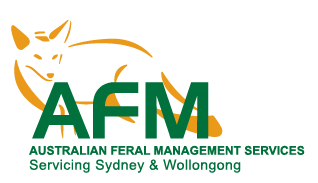A Case Study of Effective Wildlife Control
Abstract: This case study examines the successful management of raccoons (Procyon lotor) that arrived in Sydney, Australia, on a freight ship in June 2020. The study focuses on the efforts led by Mr. Steve Cope from Australian Feral Management Services, who was employed by the Department of Primary Industries (DPI) to locate and control these invasive pests. By utilising decades of experience and employing modern methods, including thermal and night vision technology, Mr. Cope and his team effectively managed the raccoon population within the vast Port Botany area.
Introduction: The accidental introduction of non-native species poses significant risks to local ecosystems and biodiversity. In this case, two raccoons disembarked from a freight ship upon its arrival at Port Botany in June 2020. Recognising the potential threat to Australia’s sensitive ecosystem, the DPI enlisted the expertise of Mr Steve Cope from Australian Feral Management Services to locate and control these invasive pests.
Methods: To locate the raccoons within the expansive Port Botany area, Mr Cope and his team employed a combination of traditional and modern techniques. They utilised thermal and night vision technology to conduct nocturnal inspections, taking advantage of raccoons’ nocturnal behaviour. Additionally, leg hold, cage, and camera traps were strategically placed around Port Botany sites to capture the animals. Audible raccoon callers were also used to attract the raccoons for easier identification and capture.
Results: After several days and nights of intensive efforts, Mr Cope successfully located and shot the two raccoons within Port Botany. To ensure no other raccoons were on the loose, follow-up inspections were conducted regularly.
The two Racoons bodies were handed to Government officials to undertake testing for exotic diseases.
Discussion: The successful management of raccoons’ arrival in Sydney highlights the importance of early detection and rapid response in preventing the establishment of invasive species. Raccoons are known for their adaptability and destructive impact on local ecosystems, they can also carry rabies and other diseases not found in Australia.
The efforts led by Mr. Cope demonstrate how a combination of experience, modern technology, and strategic trapping methods can effectively mitigate such threats.
Conclusion: The case study showcases how proactive measures led by experienced professionals like Mr. Steve Cope can prevent invasive pests like raccoons from establishing themselves in our sensitive ecosystem. By employing a combination of traditional techniques and modern technology, it is possible to effectively manage such threats before they cause irreparable damage.


